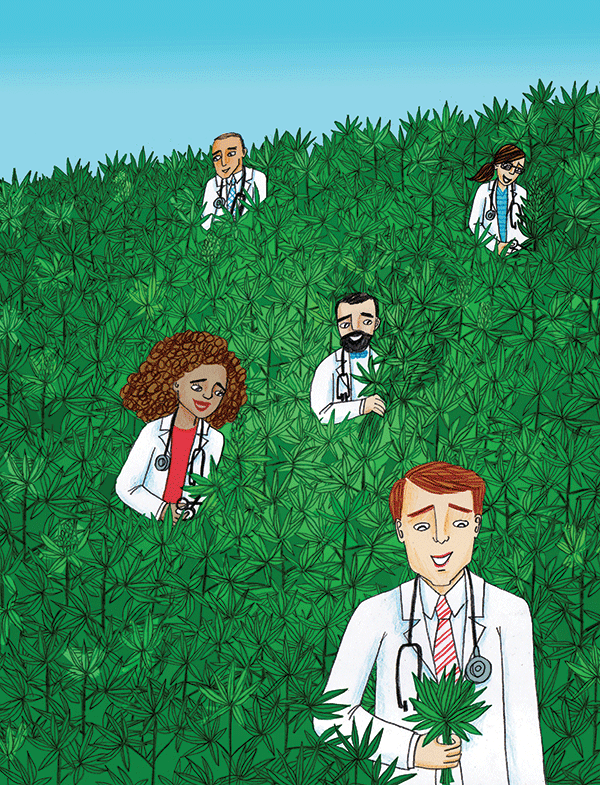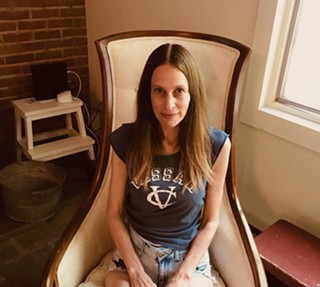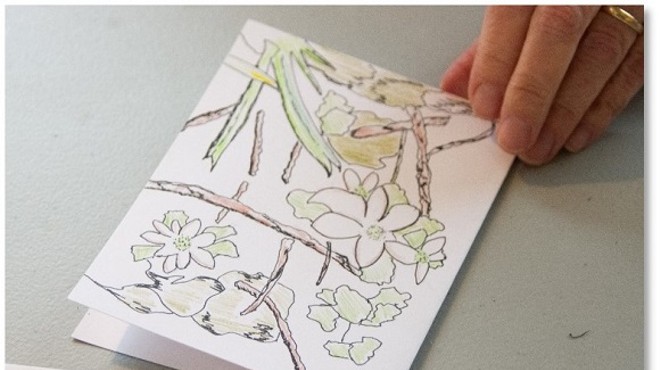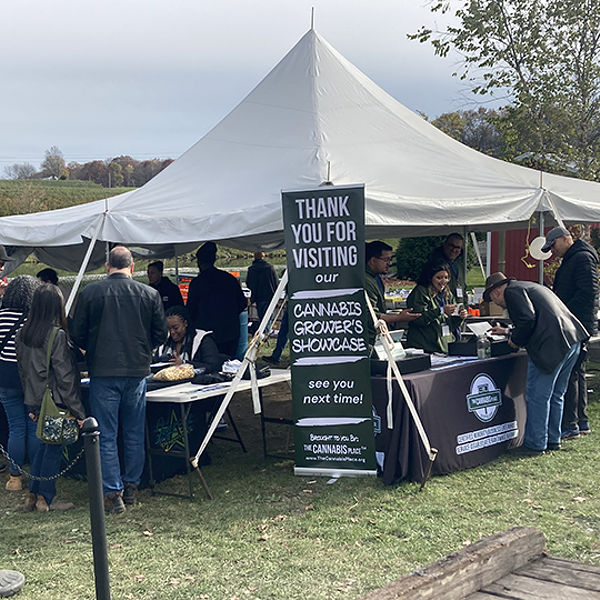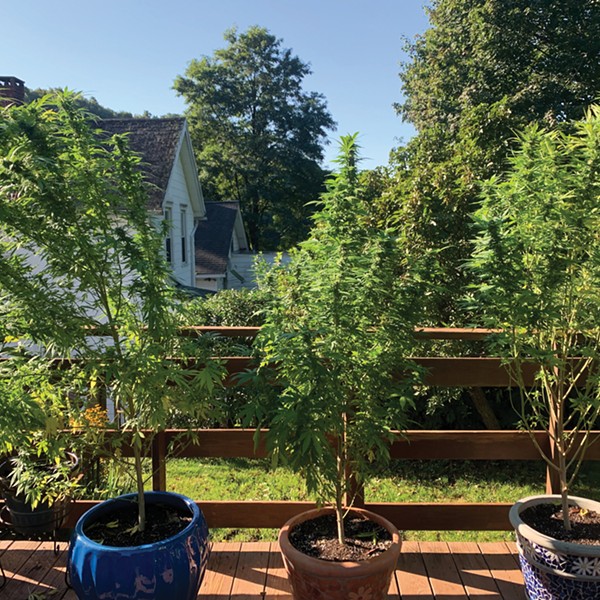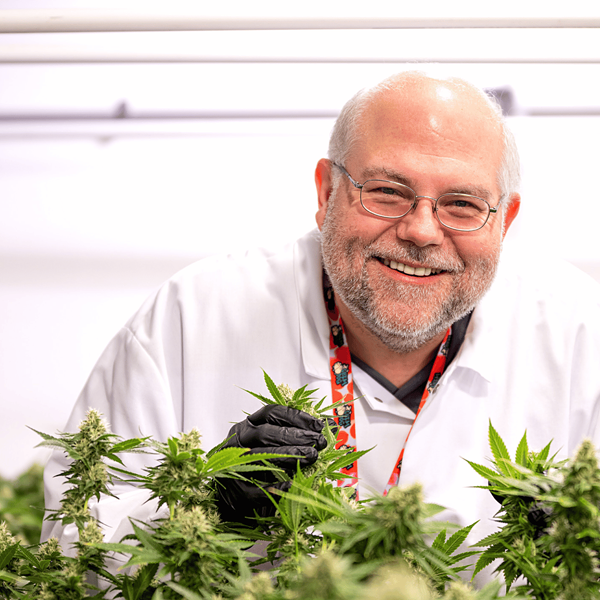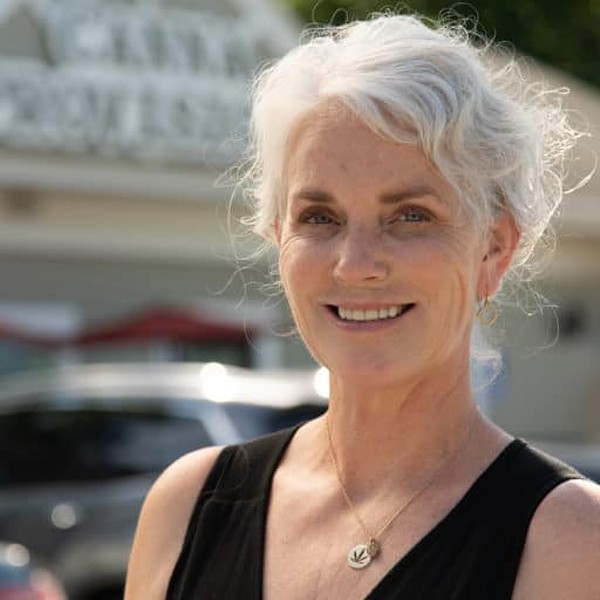If you followed the local news in July 2014, you would've seen the photo op: a button-cute 10-year-old girl blushing happily next to Governor Andrew Cuomo as he signed legislation that would bring medical marijuana to the Empire State. That was Amanda Houser, of Suffern, who seems every bit of a normal preteen, if not for the seizures that she endures daily from Dravet syndrome, a rare form of epilepsy. Her family hopes that medical marijuana—now legal in our state, though not available until at least early next year—will help reduce the number of seizures that Amanda must hurdle during her life of school and play and Teen Beach movies. It's been over a year since that moment in the spotlight with Cuomo, and her condition has spiraled down. "Lately, it's gone rampant," says her mother, Maryanne Houser. "She's had so many seizures that we don't know what to do." Hearing about other children with epilepsy who've improved with medical cannabis, Amanda and her parents are eager to access the alternative medicine. If all goes as planned, they won't have to wait too much longer.
A Toke for What Ails You
New York State's Department of Health granted the first licenses to five cannabis growers in July of this year after a rigorous application process that weeded out (pun irresistible) 38 other manufacturers that didn't make the cut. It was the first move in a state program that will be very tightly regulated, making marijuana available only to people with certain medical conditions. (The current list includes cancer, epilepsy, multiple sclerosis, HIV/AIDS, Parkinson's disease, ALS, spinal cord injury with spasticity, inflammatory bowel disease, neuropathy, and Huntington's disease.) The five growers, who will each operate one manufacturing facility and four dispensaries, for a total of 20 scattered across the state, are expected to have products available by January 2016. Given how fast marijuana grows (about 60 days from seed to harvest), that's not impossible, though in the meantime there are doctors to educate and patients to register. When the program is up and running, the cannabis-eligible will have access to whole-plant products that can help tame everything from nausea to muscle spasms to chronic pain. It's a lot more dignified than buying a dime bag on a dimly lit street corner—up to now one of the only (illegal) options for people seeking sweet, weed-induced relief.
Not that you'll be smelling the telltale scent of a joint in public places, or seeing bongs in locations other than college frat houses. The medical marijuana available in New York won't be smoked—rather, it will take one of five forms, all of them made from cannabis oil extracted from the plant. "We'll have a pill form, a vaporized pen [or vape pen], oral mucosal sprays, aerosols, and tinctures," says Amy Peckham, CEO of Etain, LLC, one of the newly licensed manufacturers of medical marijuana, which will open one of its dispensaries on Route 28 in Kingston. "It's a very controlled product with very defined efficacy. I think what New York is trying to do through heavy regulation is give consumer protection and product warranty, which is a good thing. Ours will be pure, natural, and organic—and made in New York, which is very exciting to say."
Something unique about Etain is that it will offer one product that is pure CBD, or cannabidiol—a component in marijuana that has anti-inflammatory and antispasticity properties, but that doesn't get you high. It's the CBD in the plant—not the psychoactive agent THC (tetrahydrocannabinol)—that some researchers believe to be most useful in treating conditions like epilepsy. Of course, many of New York's medical marijuana products will contain THC as well, because many health conditions benefit from the mood enhancement that THC brings. The goal is to outfit each dispensary with trained pharmacists who can guide customers toward the product that will best serve them. "Someone in a hospice situation will need a different medicine than, say, a child with seizures," says Peckham, whose mother's ordeal with ALS sparked her interest in medical marijuana. "It gives you the ability to reduce the number of medications that many terminally ill people are on, and to reduce the side effects of [conventional] painkillers. Doctors have their prescriptions, and when they work, they work—but when they don't, it's a beautiful thing that people will have this option. It's real alternative care."
High Time for Science
Amanda Houser and her family know all about the downsides of relying on pharmaceuticals. If she has a grand mal seizure, her mother reaches for an emergency medicine that stops it in its tracks, yet that comes with horrendous side effects. "The medications that I give to Amanda to stop her seizures make her wasted—she's totally drunk, can't walk, and says her stomach hurts. If we can avoid even that part, it would be a plus," says Maryanne. "We've heard so many good stories about kids out in Colorado who are using medical marijuana oil. They're going from hundreds of seizures a month to just one a month. I would love that—one a month with nothing in between. Amanda has these little ones that riddle her day."
Hopes are high—yet the science behind cannabis remains in the baby-step stages in this country. "With medical marijuana, there have been a lot of anecdotal reports [about its benefits]. But in the world of research and medicine, we really like having objective data to see if something is effective or not," says Kelly Knupp, MD, a pediatric neurologist and the lead researcher on a three-year cannabis study with epilepsy patients at Children's Hospital Colorado. Although the medical form is now legal in 23 states, marijuana remains illegal at the federal level and is considered a Schedule 1 drug by the Drug Enforcement Administration (DEA), making it very difficult to study. Researchers cannot carry out the double-blind, placebo-controlled clinical trial that is considered the gold standard, so instead they must do the next best thing: an observational study.
"We're asking families who are providing medical marijuana products to their children to keep seizure diaries before and after treatment is started, which allows us to observe in a more rigorous way whether there are any benefits to the products," says Knupp. "Everybody is hoping that the products will decrease seizures or lead to seizure freedom." Still, most doctors won't prescribe or formally recommend marijuana to their patients. "I tell them we don't really know whether this works or not. If we have patients choosing to try these products, we will try to provide as much safety around that as we can." That said, Knupp and her colleagues did conduct a retrospective study that reviewed the charts of 75 patients who were using medical marijuana; in that study, 33 percent of patients reported a 50 percent reduction in seizures. Interestingly, patients who moved to Colorado to obtain medical marijuana were three times more likely to report an improvement. Still, says Knupp, "We need a body of science for recommended doses, side effects, and precautions. That science hasn't been done yet."
Pure Hemp, Pure Relief
For Susan Rusinko, of Auburn, who has been living with multiple sclerosis since 2000, waiting for the science has never been a priority. "I played the game with my neurologist, trying this medication and that. By 2003 I was on about 17 different pharmaceuticals. It just wasn't fun anymore," she says. "I had young kids and I couldn't keep up with them. I said to my doctor, 'I'm not living my life, I'm on my couch in your prescribed drug-induced haze. I want a medication vacation.' He said, 'What do you think you're going to do?' I said, smoke marijuana." With her doctor's guidance, Rusinko weaned herself off most of her pharmaceuticals; to help with the withdrawal as well as her MS symptoms, she medicated with marijuana every day—and still does. "From then, my life has improved tremendously. I got off pharmaceutical drugs. I lost 60 pounds. I kayak. I've been to every one of my kids' concerts, every all-star game. That's why I had children—I wanted to enjoy them."
After years of keeping it a secret from almost everyone except her husband, Rusinko came "out of the closet" after her kids graduated from high school. Then there was no stopping her—she went on the news and even went to Albany to speak to senators at the capitol. "I said, 'I'm an illegal marijuana user and I'm a better person for it.'" After lobbying hard for a medical marijuana program in New York, Rusinko is finally seeing it come to pass—but it's not the program she was hoping for. "They're still treating it like an illicit drug and not the medication that it is," she says, noting the program's many restrictions. Just 20 dispensaries, she adds, is not enough for a state of this size; some people with serious illnesses will have to drive three hours to get to one. "There's more work to be done. My hope is, once they see how well it goes, they'll open it up more. And please, let them include PTSD veterans. They fought for our freedom, and we've left them out."
On a recent trip to Colorado, Rusinko got a taste of a medical marijuana program that's been up and running since the early 2000s. "I was able to go to a dispensary and it was very well run, like a medical office. It wasn't a free-for-all. The people behind the counter were very knowledgeable." While there, she had the opportunity to try different forms of cannabis—including a vaporized form that worked almost instantaneously. "It's called dabbing, where the marijuana is taken down to its purest form in an oil and then put on a heating element, so you're breathing in the vapor. Within 30 seconds the spasticity was completely gone in my legs, I could move my hand. It was incredible." Still, she won't go so far as to call marijuana a miracle drug. "It's not. But it's helped me live my life. I had an MRI last April and I had no new lesions. That means I'm doing something right."
A Leafy Green Future
With almost half of US states adopting medical marijuana programs, the terrain around the therapeutic plant is shifting. Big change could happen if Senators Kirsten Gillibrand, Rand Paul, and Cory Booker succeed at passing their proposed CARERS Act, a bill that would deregulate marijuana at the federal level. If that happens, marijuana will no longer remain a Schedule 1 drug, and researchers can conduct the in-depth scientific studies that we need to explore its safety and efficacy.
One little girl has been waiting with great expectations. "Amanda wants it—she wants the medicine, she wants the seizures to stop," says Maryanne Houser, whose family won't move to Colorado, and who won't get cannabis illegally through the black market. "It's going to happen here; it's just a matter of time. For now, we'll just wait."







